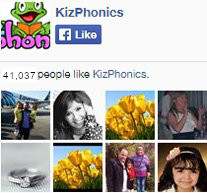The Role of Text to Speech Technologies in Phonics Education
In today's digital age, technology plays a crucial role in shaping the educational landscape. One of the significant advancements in recent years has been the rise and integration of ""text to speech"" technologies in learning environments. These technologies have found a particularly fascinating application in phonics education. But what exactly is the link between phonics and text to speech? Let's delve deeper.
Text to Speech: A Quick Overview
Before diving into its applications in phonics, it's essential to understand what text to speech technology is. At its core, text to speech, often abbreviated as TTS, converts written text into spoken words using synthetic voice technology. This technology can read aloud anything from books to website content, offering listeners an auditory learning experience.
The Power of Text to Speech in Phonics Education
Phonics is all about sounds. It focuses on teaching children the sounds associated with different letters and letter combinations. Given its auditory nature, it's only natural that technologies like text to speech can play an influential role in its instruction.
Integration in Learning Platforms
Many modern phonics learning platforms have started integrating TTS features. This allows learners to click on a word or sentence and hear the correct pronunciation instantly. Platforms like Kizphonics are at the forefront of combining technology with phonics education, offering students a multi-dimensional learning experience.
Reinforcing Phonemic Awareness
Phonemic awareness, the ability to hear and identify different phonemes in words, is crucial in phonics education. Text to speech technologies reinforce this by enabling students to hear text by speech, allowing them to match the written text with the correct phonetic sounds.
Assisting Non-native Speakers
For students whose first language isn't English, TTS technologies offer invaluable support. By hearing words pronounced correctly via text on speech tools, they can better grasp the nuances of English phonetics.
Benefits of Text to Speech in Phonics Learning
Accessibility: TTS offers accessibility to those with reading challenges or visual impairments. Even without these challenges, hearing text as speech can be beneficial for auditory learners.
Flexibility: With text to speech, learning can happen anywhere and anytime. A student can listen to phonetic pronunciations on the go, turning any moment into a learning opportunity.
Enhanced Engagement: Hearing words and their phonetic sounds can make the learning process more engaging and interactive for young learners.
Instant Feedback: TTS allows instant feedback. If a student is unsure about a word's pronunciation, they can instantly verify it, reinforcing their learning.
FAQs: Text to Speech in Phonics Education
1. How does text to speech technology work?
Text to speech technology works by converting written text into voice output. Advanced algorithms analyze the text and produce sounds that replicate natural human speech.
2. Is text to speech beneficial only for auditory learners?
While auditory learners may benefit the most from TTS, it's a versatile tool that can aid visual and kinesthetic learners as well by offering an additional layer of interaction with the content.
3. Can text to speech replace traditional reading in phonics?
While TTS is a powerful tool, it should complement traditional reading methods, not replace them. Combining both provides a comprehensive learning experience.
4. How accurate is the pronunciation in text to speech tools?
Modern TTS tools offer highly accurate pronunciations, especially when integrated into specialized platforms like phonics education websites.
5. Where can I find phonics resources that use text to speech technology?
Many modern phonics platforms integrate TTS. Websites like Kizphonics provide rich resources that merge traditional phonics education with modern tech tools.
In conclusion, text to speech technologies have carved a niche for themselves in the world of phonics education. As technology continues to evolve, it's thrilling to imagine how it will further revolutionize the way we teach and learn phonics. With tools that allow text on speech and platforms that prioritize interactive learning, the future of phonics education is both dynamic and promising."











